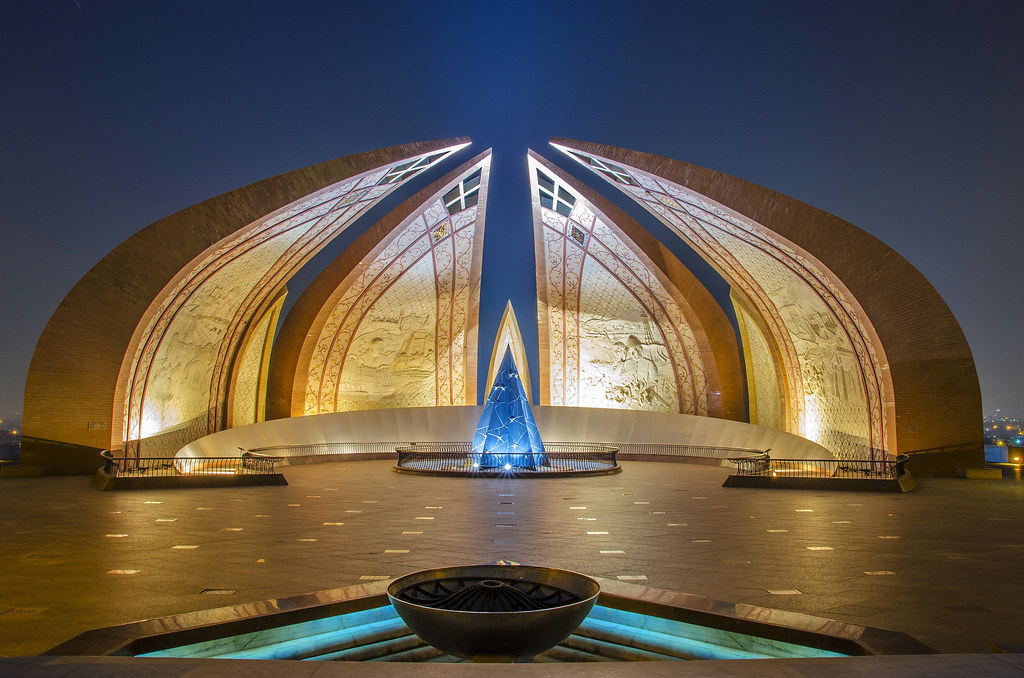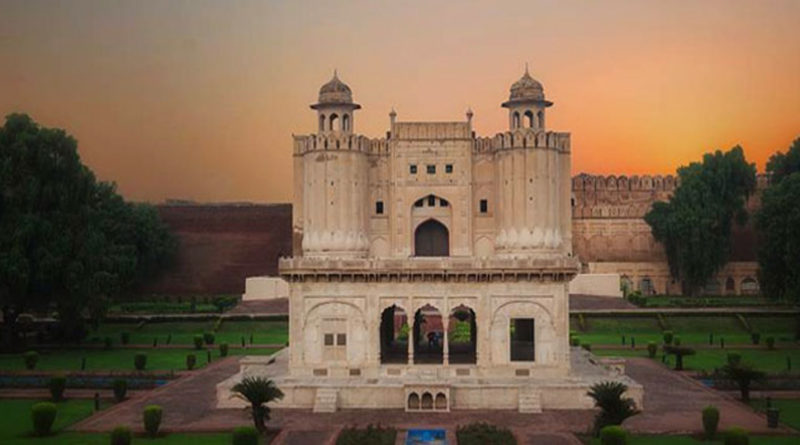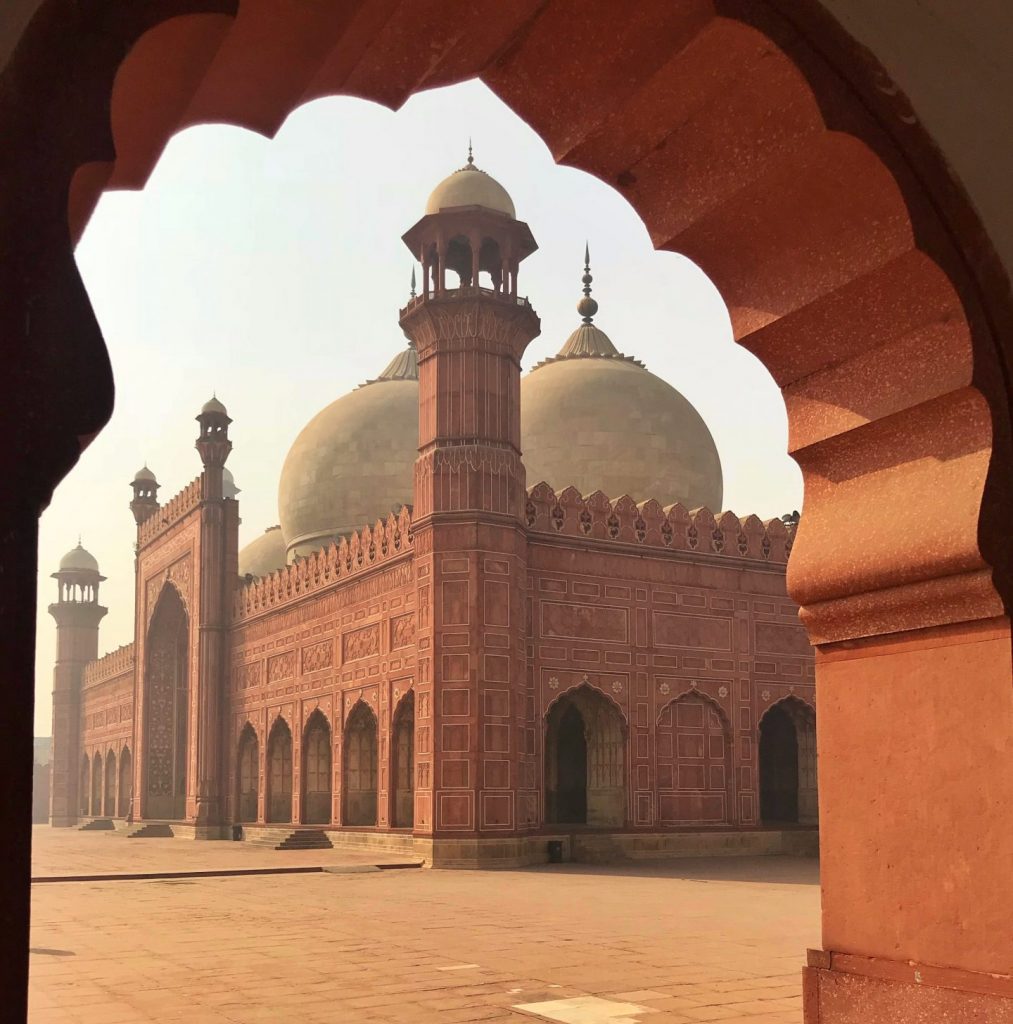The landmark, a distinguishing feature of the land space, or a conspicuous object or a historical building that makes a country distinct and easily recognizable. For example, The Eiffel Tower is the landmark of Paris, France, the Taj Mahal is of Agra, India, and the Statue of Liberty is in New York, United States, etc. Every country has its own landmarks so as Pakistan.
There are a number of beautiful landmarks in Pakistan that makes it beautifully distinct and are a center of attraction for tourist around the globe. Some of the landmarks are of times when Pakistan was not an independent state, the Mughal Emperors and British Colonistist have left behind many stunning buildings, magnificent forts and beautiful mosques with mesmerizing architecture.
Some of a few of the famous landmarks of Pakistan are;
- Shalimar Gardens
- Faisal Mosque
- Pakistan Monument
- Tomb of Muhammad Ail Jinnah
- Minar-e-Pakistan
- Wazir Khan Mosque
- Derawar Fort
- Hiren Minar
- Lahore Fort
- Badshahi Mosque
1. The Historic Shalimar Gardens
 The Shalimar Gardens are magnificent gardens built by Mughals, in particular by Emperor Jahangir. Located in Lahore, which is a city of wonders having a rich history, of Pakistan, these gardens were his dream project to please his queen. He built this garden for his wife Noor Jahan.
The Shalimar Gardens are magnificent gardens built by Mughals, in particular by Emperor Jahangir. Located in Lahore, which is a city of wonders having a rich history, of Pakistan, these gardens were his dream project to please his queen. He built this garden for his wife Noor Jahan.
The gardens have ravishing flowers and lush fruit trees, but the flora isn’t the main attraction of these gardens, as the misleading name may suggest. The striking pools that are placed in the middle of the terraces which receive water from hundreds of fountains, captivate the attention and add to the real beauty of the garden. This place is visited by many tourists, due to its eternal beauty.
2. Faisal Mosque – Unique Confluence of Islamic Inspiration
 The Faisal Mosque is the sixth largest mosque in the world, which is located on the foothills of the Margalla Hills in the capital city of Pakistan. The mosque features modern architecture consisting of eight sides of the concrete shell and is inspired by the design of a typical Bedouin tent. The 5,000-square-meter prayer hall is an eight-sided, concrete structure, inspired by the traditional tents of Bedouins, which have the capacity for 100,000 worshippers. It’s surrounded by four 88-meter-high minarets in a perfect one-to-one ratio with the base, the mosque is truly the most intriguing. It is an influential piece of Islamic Architecture. Completed in 1986, it was designed by Turkish architect Vedat Dalokay who won the Aga Khan Award for Architecture for constructing this beautiful mosque. The former president of Pakistan Muhammad Zia-ul-Haq is also buried in the adjoining ground of the Shah Faisal Mosque.
The Faisal Mosque is the sixth largest mosque in the world, which is located on the foothills of the Margalla Hills in the capital city of Pakistan. The mosque features modern architecture consisting of eight sides of the concrete shell and is inspired by the design of a typical Bedouin tent. The 5,000-square-meter prayer hall is an eight-sided, concrete structure, inspired by the traditional tents of Bedouins, which have the capacity for 100,000 worshippers. It’s surrounded by four 88-meter-high minarets in a perfect one-to-one ratio with the base, the mosque is truly the most intriguing. It is an influential piece of Islamic Architecture. Completed in 1986, it was designed by Turkish architect Vedat Dalokay who won the Aga Khan Award for Architecture for constructing this beautiful mosque. The former president of Pakistan Muhammad Zia-ul-Haq is also buried in the adjoining ground of the Shah Faisal Mosque.
3. Pakistan Monument – Symbolizing the Unity of Pakistan
 The Pakistan Monument is a National monument and Heritage Museum which is located on the western Shakar Parian Hills in Islamabad, Pakistan. It was made for symbolizing the unity of the Pakistani people. It is dedicated to the Nation of Pakistan and people who have sacrificed everything for our better tomorrow.
The Pakistan Monument is a National monument and Heritage Museum which is located on the western Shakar Parian Hills in Islamabad, Pakistan. It was made for symbolizing the unity of the Pakistani people. It is dedicated to the Nation of Pakistan and people who have sacrificed everything for our better tomorrow.
The monument has a blooming flower shape, each petal of the flower represents one province of Pakistan. The four petals represent the four provinces which are Punjab, KPK, Sindh and Balochistan while the small petals represent Azad Jammu & Kashmir, and Gilgit Baltistan It is a reflection of Pakistani culture and depicts the story of Pakistan. The Monument has a marble terrace that provides a bird’s-eye view of the city. Next to the Monument is the Heritage Museum, which is basically a wax museum depicting important events related to Pakistan Movement.
4. Mazar-e-Quaid- The National Mausoleum
 The Mazar-e-Quaid/ Tomb of Quaid-e-Azam also known as Jinnah Mausoleum is the final resting place of Muhammad Ali Jinnah. The father and founder of Pakistan. This tomb is the symbol of Karachi in the world. The tomb was completed in 1960 and is located at the heart of the city. There is a park near the tomb. Strong lights make the tomb more visible and clear in the night. There are shrines of Quaid-e -Azam, Liaquat Ali Khan, and Fatima Jinnah in the park.
The Mazar-e-Quaid/ Tomb of Quaid-e-Azam also known as Jinnah Mausoleum is the final resting place of Muhammad Ali Jinnah. The father and founder of Pakistan. This tomb is the symbol of Karachi in the world. The tomb was completed in 1960 and is located at the heart of the city. There is a park near the tomb. Strong lights make the tomb more visible and clear in the night. There are shrines of Quaid-e -Azam, Liaquat Ali Khan, and Fatima Jinnah in the park.
The shrine of Quaid has become the source of attraction for both Pakistanis and foreigners.
5. Minar-e-Pakistan – Tower of Pakistan

The Minar -e-Pakistan is a 62-meter high minaret, rich in symbols standing for the history of Pakistan. The tower is laid on an uplifted base, in the shape of a five-pointed star, which is made of four platforms.
The Minar -e-Pakistan is located in a large park of Lahore, which is popular among lahorities. This minaret is quite visible from the city and the entire city is visible from the top of the minaret dome.
6. Wazir Khan Mosque – Most Ornately Decorated Mughal-Era Mosque
 Lahore is known as a Paris of the east for the reason, that it has a cultural heritage and antique style colorful streets and monuments. The wazir khan mosque, renowned for its intricate faience, is located in the Walled City of Lahore.
Lahore is known as a Paris of the east for the reason, that it has a cultural heritage and antique style colorful streets and monuments. The wazir khan mosque, renowned for its intricate faience, is located in the Walled City of Lahore.
Wazir Khan Mosque is tentatively listed as a UNESCO world heritage site and is one of the most visited sites in Pakistan’s cultural capital.
The mosque was built in 1634 AD in the reign of Mughal emperor Shah Jahan. The name of the mosque was given by its builder “Nawab Wazir khan,” who remained a governor of Lahore until 1639 A.D. Wazir Khan received a large tract of land in Lahore bounded by the Delhi Gate to the east and the Lahore Fort to the west. The Wazir Khan Mosque is near the Delhi gate of the walled city of Lahore. Three ways lead through the bazaar which is very crowded with full of vehicles.
7. Dera War Fort
 Dera War Fort is a larger square fortress in Bahawalpur, Punjab, Pakistan. The fort bulwark of Derawar is visible from many miles and is a standout attraction in the cholistan Desert. The fort has an allure inspiring allures, walls of the forts are 1500 meters and the height of the walls is thirty meters high.
Dera War Fort is a larger square fortress in Bahawalpur, Punjab, Pakistan. The fort bulwark of Derawar is visible from many miles and is a standout attraction in the cholistan Desert. The fort has an allure inspiring allures, walls of the forts are 1500 meters and the height of the walls is thirty meters high.
Derawar fort was first built in the 9th century AD by Rai Jajja Solanki, a Hindu Rajput ruler of the Solanki clan. The fort was at first known as Dera Rawal and later referred to as Dera Rawar, which with the passage of time came to be pronounced Derawar, its present name.
The visit of Derawar fort is of three to four hours of traveling, with a four-wheel vehicle. desert, the awe-inspiring fort was built in 1733, it was characterized by a unique ensemble of 40m largely bastions all along the four sides. Desert the Derawar Fort was built in 1733.it is well known throughout the nation by its 40 massive largely bastions set on all four walls. The ramparts rise about 30 meters above the ground, and the fort has a circumference of 1.5 km. We need special permission from authorities, for visiting the fort and it’s worth watching.
8. Hiran Minar – Massive, Tempering and High Built Tower
 In 1906, Hiran Minar was built by Emperor Jahangir in the loving memory of his deer. This tower stands 30 meters high and 10 meters wide from its base. There are 214 holes around the perimeters, which is believed to have been used as support for the served heads of hunted animals trophies by the emperors. The Hiran Minar is situated in the city of Sheikhupura which was a hunting ground in the early 1600s.
In 1906, Hiran Minar was built by Emperor Jahangir in the loving memory of his deer. This tower stands 30 meters high and 10 meters wide from its base. There are 214 holes around the perimeters, which is believed to have been used as support for the served heads of hunted animals trophies by the emperors. The Hiran Minar is situated in the city of Sheikhupura which was a hunting ground in the early 1600s.
As per history one day, during a hunting session, Jahangir spotted the deer he wanted to hunt but mistakenly he hunted his beloved deer, Mansraji. Besides feeling guilty, he ordered the construction of a Hiran Minar.
9. Lahore Fort
 Lahore fort is built in old Lahore. The fort was built in 1544AD by Akbar (the Mughal ruler). The fort is located in the Northwest of the city. The 13 gates of the fort were made by Akbar, among them, the main gates are located in the middle of the eastern and western walls. The architecture of the fort was magnificent and placed as out of fairy tale. The entrance is amazing with twin domes that lead further, extensively decked pavilions, and a courtyard with water features.
Lahore fort is built in old Lahore. The fort was built in 1544AD by Akbar (the Mughal ruler). The fort is located in the Northwest of the city. The 13 gates of the fort were made by Akbar, among them, the main gates are located in the middle of the eastern and western walls. The architecture of the fort was magnificent and placed as out of fairy tale. The entrance is amazing with twin domes that lead further, extensively decked pavilions, and a courtyard with water features.
These courtyards are huge that it allows elephants carrying people could enter inside. In fact, there are stones stairs that are also made for elephants. The fort is not in its actual state. With the passage of time and the ruler, every Mughal emperor came along beside the Sikhs, British colonizers further built a pavilion or a place a wall to the fort. After that Jahangir, Shah Jehan, and Aurangzeb, all created their own changes by creating huge walls to the structure.
10. Badshahi Mosque – The Crown Jewel of Lahore

It was constructed by Mughal emperor Aurangzeb between 1671 and 1673. It is an example of Mughal Architecture. It is the fifth-largest mosque in the world. The construction was begun in 1671 in the direction of Muzaffar Hussain, the governor of Lahore. Its design resembles the Jama Mosque, Delhi which was built by Shah Jahan, father of Aurangzeb. It’s 170 meters on each side.

